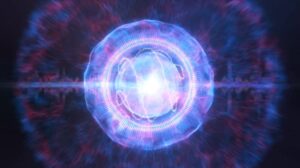This concludes our compendium series on the nature of the soul. It covered sundry religious and philosophical motifs ranging from ancient Greek to present-day quantum soul realizations. The one salient theme or thread woven throughout is the principium of the life-force that animates. In Homer, it is the psyche (ψυχή) and shadowy-substance. Plato first presents the immortality of the soul as emanating from the Supernal Realms of Transcendent Forms. Aristotle considered the soul as a mechanism that animates all aspects of lifeforms, thus considered as the Actualized Principle of Animation. For St. Paul the soul is considered in three-fold fashion: a) Soul as vitality, life principle. b) Soul as Spiritual Body and c) Soul as Universal Principle. Gnostic notions continued to expand on St. Paul’s themes, with the added distinction between psychic and pneumatic aspects. Plotinus emphatically taught the idea of the One and Absolute; hence, for Plotinus, the vehicle of the soul is all about a journey home to the One and Unborn. In St. Augustine the soul was subservient to the spirit (spiritus) and he devised a seven fold tier system of the soul. The Byzantine-Orthodox tradition and St. Maximus states that the soul (like the ancient Greeks in our study) is the “Life-Force” that animates the body and its functions. As function it is mostly identified with Spirit and is non-corporal in nature. It is immortal in stature and cannot be soiled by any exterior phenomenal obtuse perceptions. It is a self-moving principle and thus exits the body upon death. Our portion on Christian Mystics and the soul focused on the ascetical theologies of Dionysius the Areopagite, as well as the Carmelite saints John of the Cross and Teresa of Avila. Perhaps the most fascinating segment of the series presented the North American Indian Soulology, with its vast network of various soul-extensions. The great spiritual system of Advaita Vedanta measured the soul as synonymous with the Self, or Divine Ātman. The Chinese-Taoist segment considered soul as a spiritual-force, one that is balanced between Yin and Yang energies. Buddhist notions focused on the problem of the theory of Anatman and the realization that it’s a matter of falsely equating the five-skandhas with True Soul or Self. The Quantum Factor brought our series to its mystic climax that asserts its Cosmic-nature: “I don’t see the soul and consciousness as an epiphenomenon, or product, of matter. It’s just the other way around: I see matter as an epiphenomenon of soul and consciousness. The material world has evolved from the absolute vacuum of space—the home of the soul.” (Dr. Fred Alan Wolf) Our series then concluded with the Lankavatarian notions of the no-soul, or personal soul vs. the ultimate realization of the notion of “soulness” that is synonymous with Self and Mind.
It is our hope that this series has provided a thorough treatment of a subject matter that is contentious considering all the diverse belief systems, but that ultimately some form of consensus can be reached on the nature of the Soul and its impact throughout the millennium. It is simply inescapable and will continue to haunt the spectral of defiled consciousness unless its ultimate function is measured with the grandeur realization of the Spirit-Mind that is its sole animator and guide.


Thank you for providing these wonderful lessons on the nature of the soul.
Each module is an entire course in itself.
This will provide many many hours of quiet contemplation and blissful meditations.
A vast treasure house of noble shining wisdom.
Sarva Mangalam.